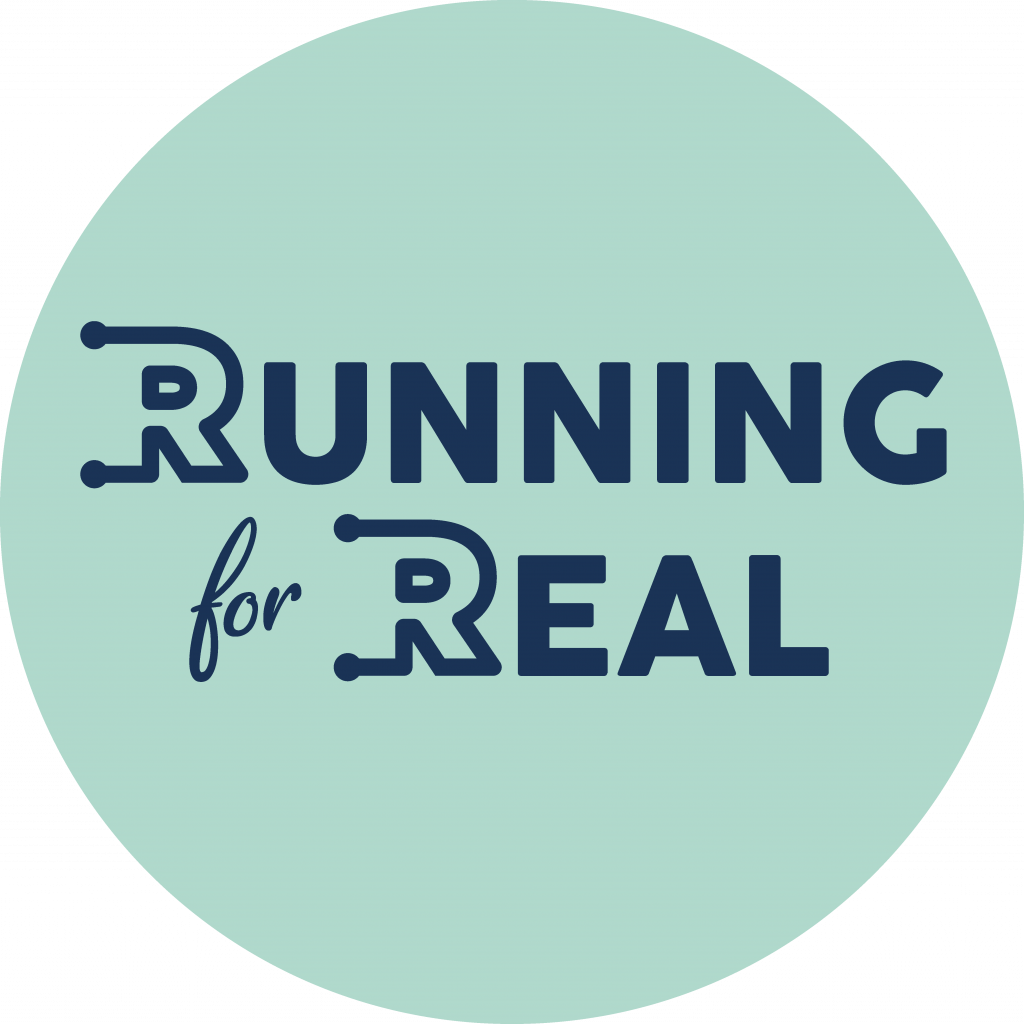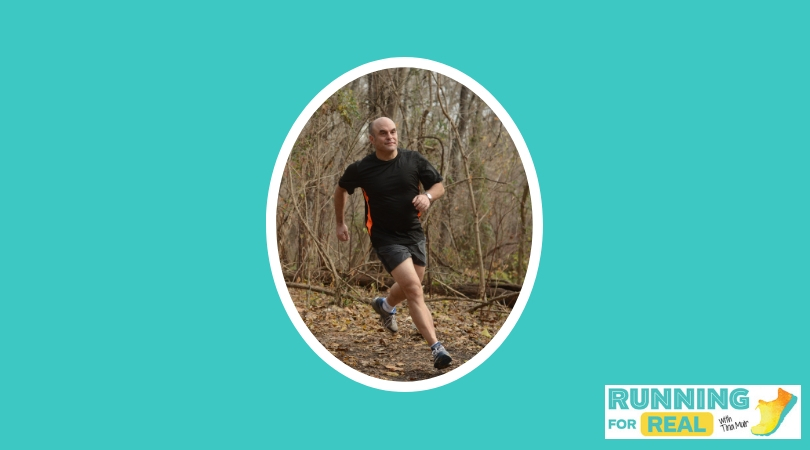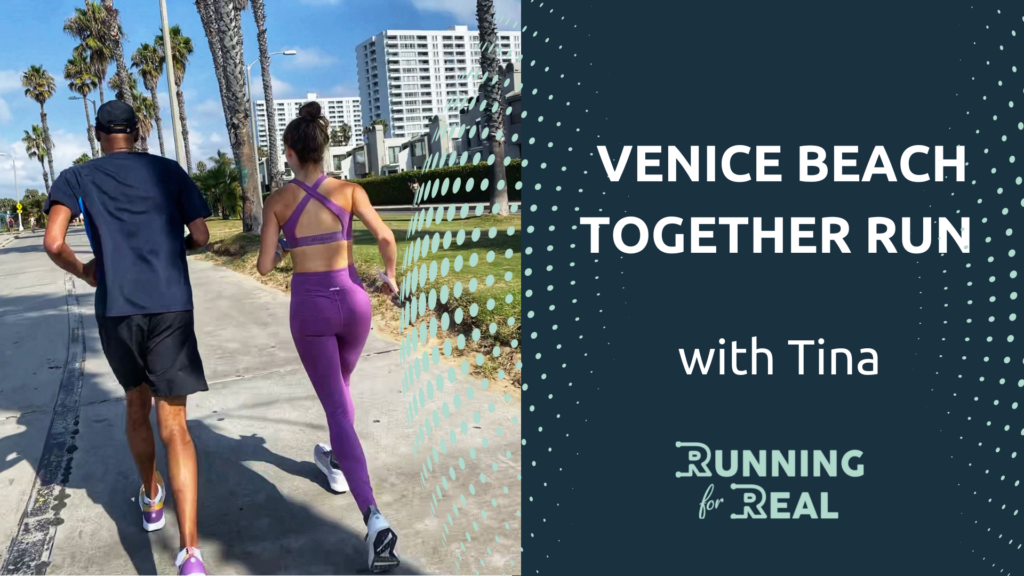After being diagnosed with Haglund’s Deformity, Tina wrestled with how to treat the debilitating pain. After doing extensive research and exhausting the more conservative options, she decided to have surgery.
Now she’s sharing what she learned so that others with the same condition will have an easier time determining the best course of action for themselves. She spoke with her chiropractor, Dr. Brennan Donahue; her surgeon, Dr. C. Thomas Haytmanek; her physical therapist, Ana Robinson, and her good friend, ultra runner Stephanie Howe, who also suffered from Haglund’s.
Listen to the Running for Real podcast here:
Apple (iTunes) Podcast | Sticher | Castbox | Overcast | Spotify | Google Play | iHeartradio |
Tina began experiencing extreme heel pain after a 50 mile trail race, but it had been troubling her for a while. Her chiropractor, Dr. Brennan Dohanue, suspected that she might have a Haglund’s Deformity, but, he explains, “It doesn’t mean that just because you have one, you have to get it removed. A lot of it just leads to insertional Achilles tendonitis and inflammation of the tissue around there from tightened calf muscles, and things like that.”
However, just because Haglund’s may not develop to the point where surgery is necessary, that doesn’t mean that heel pain should be self-diagnosed and self-treated. Dr. Donahue recommends reaching out to a medical provider as soon as it begins. “Even if it’s just for an evaluation, whether that’s to confirm your thoughts, deny your thoughts, they’ll help you decide what you should do, but more importantly, what you shouldn’t do. I think a lot of people want to try all modalities at home first, and sometimes with these inflammations of these tendons, if we’re at home, scraping on it ourselves and doing all these things we see on Instagram, we can be making that thing exponentially worse.”
One thing that runners can do, he says, is pay more attention to their feet. “A lot of us don’t activate the bottom of our feet as well as we should, which then adds strain further up our chain, into our calf and our Achilles and things like that. Most of us know to do squats and do lunges, and to do side-lying clams is one that you hear all day long in the running community, but rarely are we told to maybe go walk in the backyard barefoot a little bit and strengthen the bottom of our feet that way, or run on some Astroturf, or do specific exercises to help strengthen your toe muscles.”
Dr. Donahue and Tina tried everything from foot exercises to dry needling, shockwave therapy, ART, and myofascial release. Those treatments didn’t work, and while it isn’t easy for a doctor to acknowledge that they can’t help a patient, Dr. Donahue believes that it’s important to know one’s limitations. “If you start pushing the truth of your knowledge a little bit, people will read through that. I’m not a jack of all trades. I do not know it all. There’s a lot of smarter people out there in this world than me and we luckily had access to them. So let’s start bringing those people into the picture, and see what we can do with this thing.”
They came to the conclusion that surgery would give Tina the best chance of being able to run again at her desired level. “As someone who used to run 90 miles a week, I couldn’t even get close to 70 miles in a week, but I knew I could do 30,” she says.” And I had to ask myself, was I prepared for that to be my potential future? Was I prepared to let go of some of these things, Rim to Rim as an example, something I want to do at some point, would I ever be able to do that with this situation? And I came to the realization the answer was ‘No.’ I still have a lot of professional goals. I have a lot of things I want to chase as a runner and push the boundary. And it just became clear to me that that was not going to happen.
“And I was not ready to kind of say, ‘Well, you know, I’m 35 years old; I guess that’s it then.’ I think that is one of the scary parts here, of recognizing that you have to weigh that for yourself. Maybe you are comfortable with saying, ‘You know what, I’ll just cut back and run easy every time; I’m okay with that.’ Kick the can down the road: ‘I’ll deal with it if I want to.’ But for me, and for many listening, especially those who are messaging me, saying, ‘I’m so frustrated. I just really have these things I want to do,’ then maybe it’s time to get a second opinion.”
That was a decision that Tina’s friend Stephanie Howe had also come to after years of suffering from Haglund’s.
Stephanie is a professional trail ultra runner who has won races including Western States 100, Lake Sonoma 50, and Bandera 100K, and podiumed at UTMB. She first noticed stiffness in her Achilles and pain in her heel in 2014, going into her first Western States. For a while, running itself was fine. But when she would stop running, she recalls, “It would be like the wrath of my foot. It would just lock up and then I would limp around all day. But I could still train and I could still race and I was racing well. So I kind of just let that be like a pebble in my shoe. It really bothered me, but yet wasn’t stopping me.”
After a couple of years though, she realized, “I can’t live like this. And it was more not the running side, but just the life side of things, because it really impacts your quality of life. You can’t do anything, because you know you’re going to limp. I remember sitting on the couch and having to go to the bathroom and just being like, ‘I don’t want to get up and walk across the room because I know how much it’s going to hurt.’ And thinking of fast forwarding 20 years into life and having this pain, I was just like, ‘I can’t do this.’
She tried every potential cure she could find short of surgery, but when nothing worked she went to Sweden for a minimally invasive operation. “I did thrive after that for about a year and a half. It was great. I was running; it wasn’t painful; but then it came back and it came back full on and almost worse than it was before surgery. And I just didn’t expect that because I’d had a full year of running really well.”
She went back to Sweden and had another minor surgery. That one lasted for four months. “At this point I was just devastated. And so I went to the Steadman Clinic, trying to get answers. And that’s where I met Dr. Haytmanek.
“I remember this vividly. I walked into his room. He had my MRI of my foot up on the screen. And he was like, ‘Stephanie, your problem is super simple. You’ve got this bone here. You need surgery.’ And I burst into tears. I was like, ‘Why do you think your surgery is going to be better? I’ve had two already. Why is this going to solve my problem?’ And he explained it. I looked at it. We talked some more. And I really just was to the point of, ‘I need to trust this person and just dive in head first.”
Stephanie fully appreciates why someone with Haglund’s would try to avoid surgery. “But a lot of these treatments are not proven to actually fix the underlying issue. They may fix the symptom for a while. But I just go back to when Dr. Haytmanek put my foot up on the wall, like, ‘See this bone? It’s not going away.’ It was very clear to me that none of these things were going to help that problem, the underlying issue. So in some ways, if it seems too good to be true, it probably is.
“And I don’t say that in a way of trying to oversimplify it, because when you’re vulnerable, you want to believe someone. You want to believe someone who says, ‘Yes, this PRP, this is going to solve your issue.’ I have a background in science and even I was confused, looking through all of the literature and evidence. So it’s overwhelming. But also remember that each person is a specialist in their own area. So obviously each person thinks they can solve it, but you have to kind of take it with a grain of salt and go back to, what is the impetus? What is causing this pain?”
Stephanie has returned to racing, but it’s been a long road back. However, she says, “When you think of the alternative of limping through life, it goes by pretty quickly and you do see progress. Surgery can be scary, but it can also be amazing. So be open to it. Ask a lot of questions. Do your research. You don’t want to just trust somebody’s word, but also know that it can get better. You don’t have to just live through this and be in pain every day.”
Partly based on Stephanie’s experience, when Tina decided to have surgery, she also had hers performed by Dr. C. Thomas Haytmanek. He’s recognized as a leader in foot and ankle surgery, and is accustomed to working with athletes and their special needs – he’s a member of the U.S. Ski and Snowboard medical team.
As he explains, Haglund’s Deformity and insertional Achilles tendinopathy often occur together, but it’s a chicken or egg situation. It may be that inflammation of the Achilles tendon triggers bone growth in the area. Or it may be that the enlarged bony mass irritates the Achilles. Whichever came first, by the time that the sufferer is in enough pain to address it, they coexist and both have to be treated.
Like Stephanie, Dr. Haytmanek understands how frightening the decision to have surgery can be. But, he says, “The risks are quite low. Surgery has changed. Not only the medicine: being nauseous after surgery and worrying about waking up and all those things are not very relevant anymore. Maybe 15 years ago or so, you were in a cast for six weeks after this surgery. And we’ve changed that. Now, in six weeks you’re going to be walking in regular shoes, unassisted. And so that is a huge difference compared to being casted for six weeks. You atrophy, your leg gets thin, you have to get all that muscle back, the ankle is going to be stiff, and we’re avoiding all of that now.”
He recommends looking at the process as a series of hurdles. “I think it’s a comforting way to think about your progress because where you are, you’re gonna say, ‘Well, I still have some more hurdles to go, but gosh, I made it over the first two or three big hurdles’ and then you feel like you’re moving forward. Which I think is a really nice thing to do, and feel like every week you’re making a little bit of progress. That’s part of why our protocols are designed where every couple of days are doing a little more, a little more, a little more. So you can feel that forward progress. It’s a mental win as much as it is a physical improvement in your heel.”
Ana Robinson, Tina’s physical therapist, also emphasizes the importance of looking at the overall progression of recovery. “One of the things that people struggle with is maybe not an actual specific movement, but just grasping the whole story and how we get from A to B. So I think that one of the most important things is, let’s take a look at this big picture and how it looks from today to when we start a running progression, and who do we need to assemble to make you feel supported in the whole process?
“Because there will be some point in time in this recovery where you feel you’re at a plateau longer than you wish, or you have a little bit more swelling that you weren’t expecting after an exercise or an activity, or we move into what feels to you like much more typical training and you have a hitch in your getup at that time. And what does that look like and how do we solve problems at that time? So I would say that an effort to solve those problems as they come up, establishing that plan and that team is really, really helpful.”
Although it may be discouraging to find, as Stephanie did, that you’re not back to “normal,” even after a year or even two, Ana emphasizes, “Have faith in the fact that you will continue to feel better well beyond that year mark. So I guess that’s sort of a half-cup-full way of looking at it. The other way I describe it is that maybe the first six to eight weeks feel a little tough. I mean, those of us who enjoy exercise, enjoy running, love running in every way, it fulfills us in so many ways. And so to lose that for a period of time is its own difficult journey. But if you’re willing, you can look back each week, and if not, each month, you are going to see meaningful change in your experience. It is a lot to take on. It is a big period of time to commit to this, but I promise that after that acute phase, you will notice that something gets better for you and feels more fulfilling, and you start to feel more like you every month.”
For anyone suffering from Haglund’s and insertional Achilles tendinopathy, Dr. Haytmanek recommends consulting the American Orthopedic Foot and Ankle Society to find a surgeon who specializes in foot and ankle surgery. To find a doctor or therapist who specializes in treating runners, visit RunCare for professionals in your area.
Resources:
Active STL’s website (Dr. Donahue’s practice)
Thank you to Tracksmith, AG1, and Precision Fuel & Hydration for sponsoring this episode.
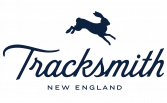
Tracksmith is an independent running brand inspired by a deep love of the sport. For years the brand has elevated running wear using best-in-class materials and timeless silhouettes that perform at the highest level and can be worn everyday, not just for running.
Tracksmith helps the environment by making comfortable, durable clothes that will last for years, rather than winding up in the landfill. They help athletes who are trying to make the Olympic trials, and they offer scholarships for creatives to work on their crafts.
If you’re a new customer, go here and use the code TINANEW at checkout to get $15 off your order of $75 or more. Returning customers can use the code TINAGIVE, and Tracksmith will give you free shipping and donate 5% of your order to TrackGirlz.
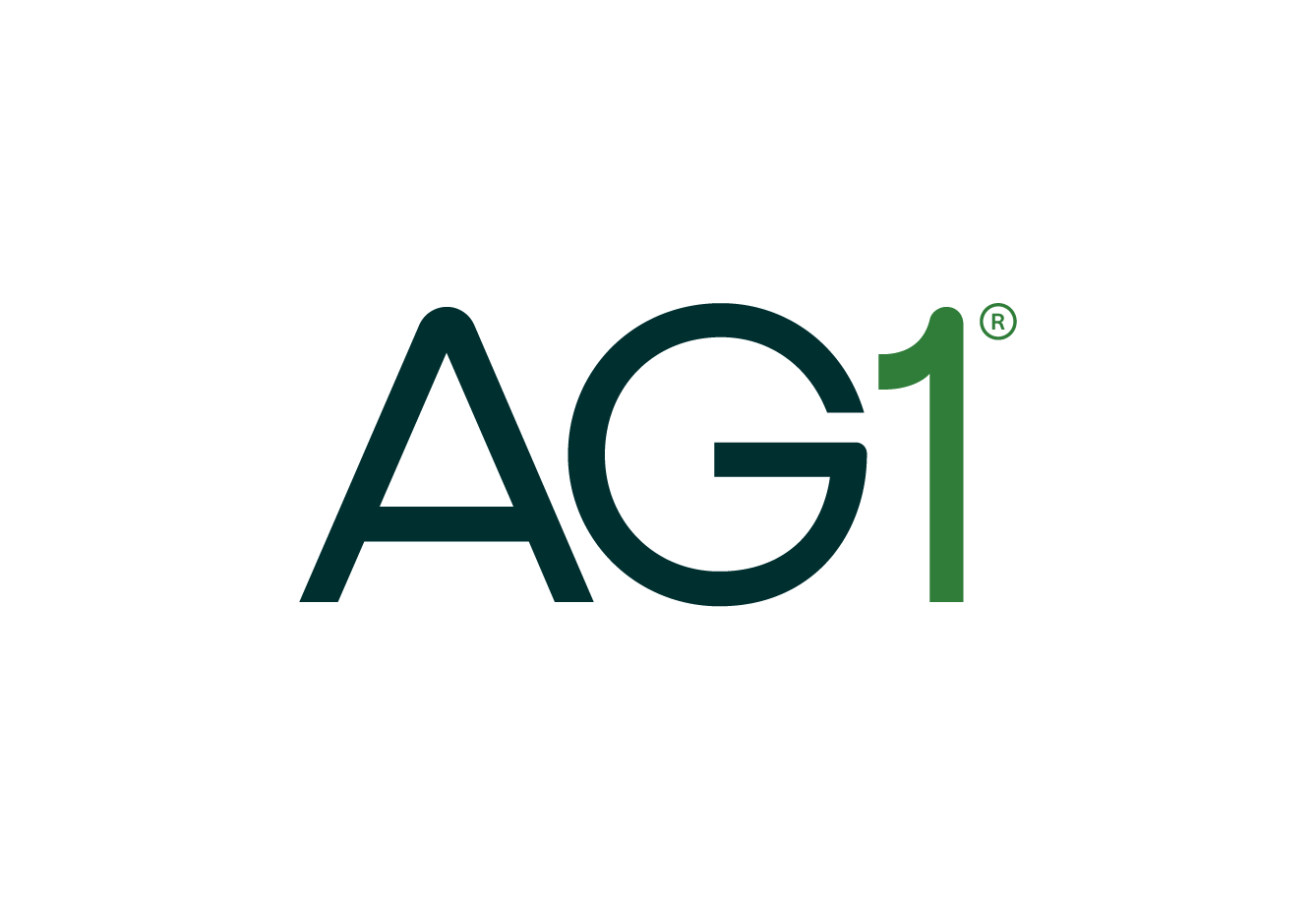
AG1 is the daily Foundational Nutrition supplement that delivers comprehensive nutrients to support whole-body health.
With its science-driven formulation of vitamins, probiotics, and whole-food sourced nutrients, AG1 replaces your multivitamin, probiotic, and more in one simple, drinkable habit. And just as importantly, it actually tastes good!
If a comprehensive solution is what you need from your supplemental routine, go here and get a FREE 1-year supply of Vitamin D AND five free AG1 Travel Packs with your first order!

Precision Fuel & Hydration helps athletes crush their fueling and hydration so they can perform at their best. Tina used their electrolytes and fuel when she finished first female and third overall at the Bryce Canyon 50 Miler. You can use their free Fuel & Hydration planner to understand how much carb, fluid, and sodium you need for your key runs.
If you have more questions, Precision offers free video consultations. Their Athlete Support crew will answer your race nutrition questions and act as a sounding board for your fueling strategy. No hard-sell, just an experienced and friendly human who knows the science and is full of practical advice on how to nail your race nutrition. You can book a call here.
Once you know what you need to run your best, you can go here to get 15% off their range of multi-strength electrolytes and fuel.
Thanks for listening!
If you haven’t already, be sure to subscribe on Apple, Spotify, iHeart, YouTube, or wherever you get your podcasts. And if you enjoy Running for Real, please leave us a review!
Keep up with what’s going on at Running for Real by signing up for our weekly newsletter.
Join the newsletter
This is not your usual email newsletter. With Tina’s personal reflections and recommendations, suggestions of things to do, thoughts to contemplate, and some updates, this newsletter is one that you’ll WANT to read, not hit “delete” as soon as you see it.
Follow Tina on Instagram, Facebook, and Twitter. You’ll find Running for Real on Instagram too!
Want to be a member of the Running for Real community? Join #Running4Real Superstars on Facebook!
Subscribe to our YouTube channel for additional content, including our RED-S: Realize. Reflect. Recover series of 50+ videos.
Thank you for your support – we appreciate each and every one of you!
